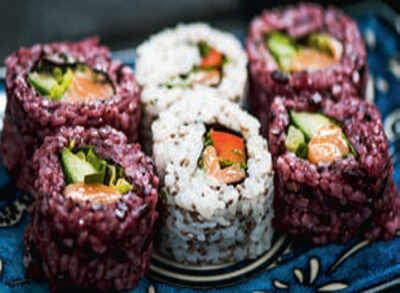Rice above white

Make the shift
White rice is good but not the best. It is milled and polished, its flavour, texture and appearance altered… all to extend its storage life. The refining process strips white rice of iron, vitamins, zinc, magnesium and many other nutrients. Even when it is nutrient-fortified, it doesn’t match the nutritional density of whole grain rice. And yes, the super healthy bran is also missing! “Too much of short grain white rice — the sticky varieties — have a higher glycaemic index that tend to spike the sugar levels in the body. In comparison, brown and red rice are both rich in fibre content and have a lower glycaemic load,” says nutritionist Dr Taranjeet Kaur.
Red hot
Red rice is a special variety of rice that’s packed with antioxidants. It’s nutty flavour and earthy texture have made it a favourite of chefs and food photographers. Switching from white to brown or red rice has shown a lowered risk of diabetes, cardiovascular diseases, cholesterol and lowered blood pressure levels as well. It even provides protection against inflammation and cancer.

Black is back
Black rice is gluten-free, gut-friendly, a natural cleanser and heart-savvy. The Asian basic, also called Chakhao in Manipur, is popping up at supermarts all over the world as the super-food to get hold of. The bran hull of black rice, which is the outermost layer of the rice grain, contains one of the highest levels of the antioxidant anthocyanin found in any known food. “Black rice is lower in calories but higher in protein content as compared to brown, red or white rice. Its antioxidant content is almost six times higher than other varieties of rice,” confirms Dr Kaur.
Not all white rice is unhealthy
An exception is whole grain and white long grain basmati rice that’s low in glycaemic load and is nearly equivalent to brown rice in these terms. It is digested slowly, thus keeping the blood sugar levels controlled. Basmati rice is also nutrient dense. It contains high amounts of vitamin B, copper and magnesium, which help in controlling blood sugar levels. These combined with antioxidants and anti-carcinogenic properties found in its bran and germ, make basmati rice a wise choice.


